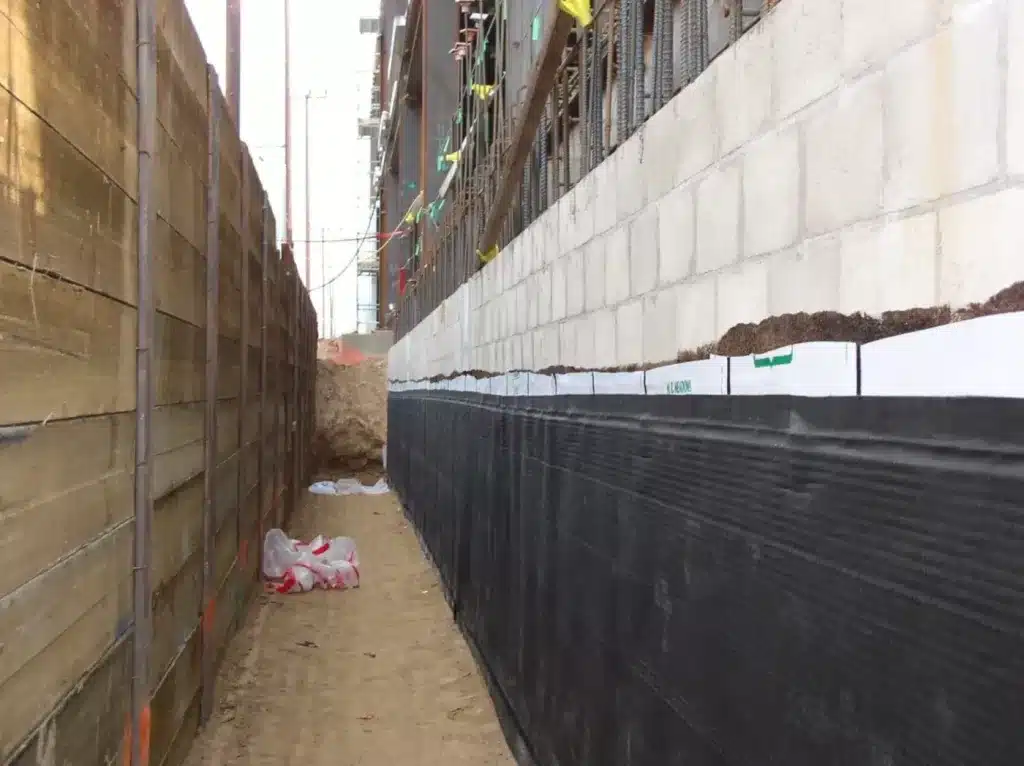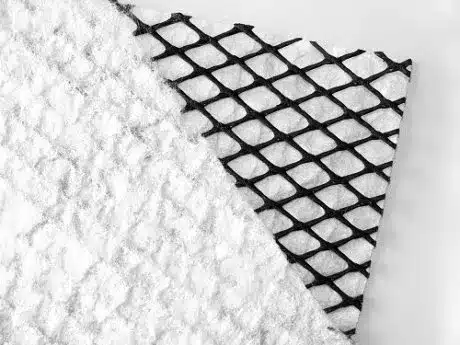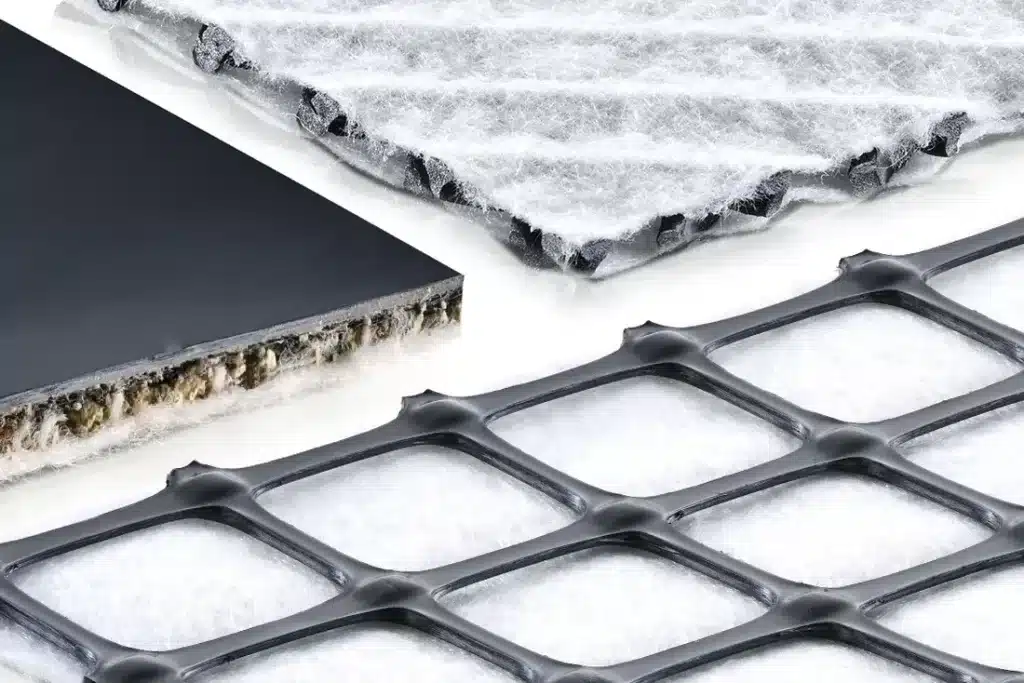+86-159 9860 6917
info@geofantex.com
geofantex@gmail.com
+86-400-8266163-44899
In the realm of civil engineering and construction, the integration of innovative materials has significantly improved the quality and durability of infrastructure. Among these materials, geocomposites have emerged as a critical component in the construction and maintenance of paved roads. This article delves into the world of paved roads geocomposite, exploring its distinctiveness from geotextiles, its purposes, properties, and more, providing a comprehensive understanding of its role in modern paving techniques.

What is the difference between geocomposite and geotextile?
A geocomposite consists of a combination of one or more geosynthetics, such as a geogrid, a geotextile, a geomembrane, and/or a geonet, with another material. This combination enhances its functionality, making it versatile for use in road construction and maintenance. Unlike geotextiles, which are single-material fabrics made from polyester or polypropylene and primarily used for filtration and separation, geocomposites serve multiple purposes. They provide drainage, filtration, separation, reinforcement, and barrier protection, offering a comprehensive solution for various construction needs.
What is the purpose of geocomposite?
Geocomposites are versatile materials used in civil engineering, especially for improving paved roads. They serve several key functions:
- Drainage: Geocomposites are essential for removing water, not only from the pavement structure to extend road life but also for drainage from a basal layer in case of embankments and for drainage behind retaining walls and/or bridge abutments. This helps reduce hydrostatic pressure and maintain structural integrity.
- Reinforcement: They strengthen the soil, increasing the road’s capacity to handle heavy traffic by enhancing its load-bearing capabilities.
- Filtration: Acting as a filter, geocomposites prevent soil from mixing into the drainage system while allowing water flow, ensuring the stability and longevity of the road structure.
- Protection: They provide a safeguarding layer to geomembranes and other critical materials in road construction, protecting them from damage.
- Barrier: By acting as a barrier against water and other liquids, geocomposites prevent erosion and water damage, contributing to the overall durability of road infrastructure.
What are the properties of geocomposites?
Geocomposites are highly beneficial in road construction due to their versatile properties:
- Durability: They withstand various underground conditions, including physical, chemical, and biological factors.
- Flexibility: These materials easily adapt to uneven surfaces, making them ideal for diverse construction needs.
- Permeability: With vertical and horizontal permeable capacity, geocomposites ensure efficient liquid and gas flow, preventing soil displacement.
- Strength: Their high tensile strength means they can handle the stress of installation and long-term use.
- Lightweight: Being light, they are easy to transport and lay down, simplifying the construction process.
- Cost-effective: Geocomposites extend the lifespan of roads and reduce the need for frequent maintenance, saving money over time.

How do geocomposites promote road construction’s environmental sustainability?
Geocomposites contribute significantly to environmental sustainability in several ways:
- Reduced Material Use: They often allow for the reduction in the use of traditional construction materials like aggregate and sand, which in turn reduces quarrying and transportation impacts.
- Longevity: By enhancing the durability and lifespan of road infrastructure, geocomposites reduce the frequency of repairs and replacements, leading to less waste and lower consumption of resources.
- Recyclability: Many geocomposites are made from recyclable materials and are themselves recyclable at the end of their life cycle, promoting a circular economy.
- Erosion Control: They help in controlling erosion and reducing sediment run-off, which is beneficial in preserving natural landscapes and water quality.
- Energy Efficiency: By improving the structural integrity of roads and reducing maintenance, geocomposites contribute to smoother surfaces and potentially lower fuel consumption for vehicles.
In conclusion, selecting the right HDPE geocell manufacturer is pivotal for ensuring the success and durability of your construction projects. By considering the outlined requirements and armed with answers to these common questions, you’ll be well-equipped to make an informed decision. Remember, the quality of your geocell system directly impacts the overall stability and longevity of your construction endeavors, so choose wisely. With its commitment to quality, customization, and customer service, Geofantex stands out as a leading choice for your HDPE geocell needs.



Get Free Sample
We’ll respond as soon as possible(within 12 hours)






















